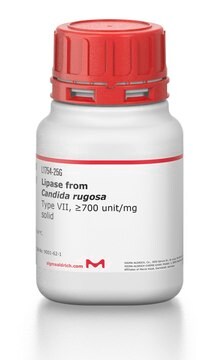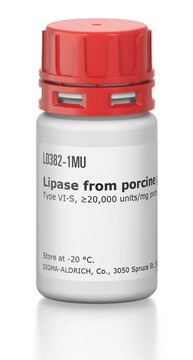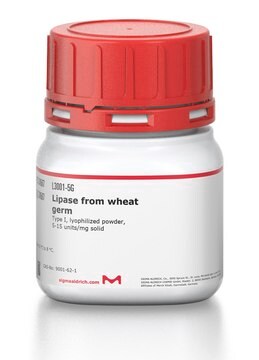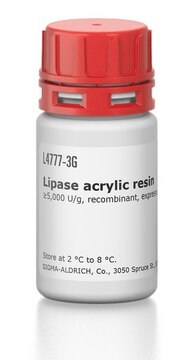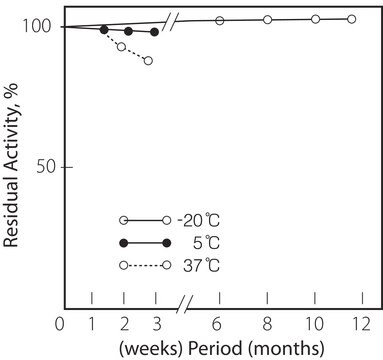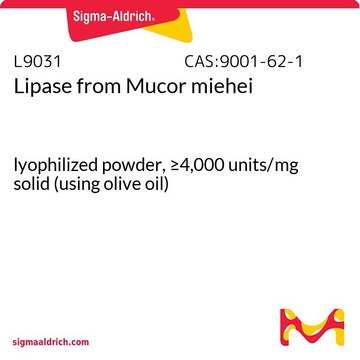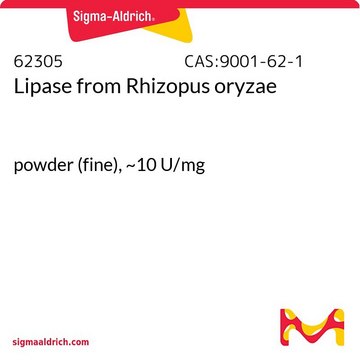Kluczowe dokumenty
L8525
Lipase from Candida rugosa
lyophilized powder, ≥40,000 units/mg protein
Synonim(y):
Triacylglycerol acylhydrolase, Triacylglycerol lipase
About This Item
Polecane produkty
pochodzenie biologiczne
fungus (Candida rugosa)
Formularz
lyophilized powder
aktywność właściwa
≥40,000 units/mg protein
skład
Protein, ≥4.0%
obecność zanieczyszczeń
α-amylase ≤0.05 unit/mg solid
protease ≤0.001 units/mg solid
temp. przechowywania
2-8°C
InChI
1S/C11H9N3O2.Na/c15-8-4-5-9(10(16)7-8)13-14-11-3-1-2-6-12-11;/h1-7,16H,(H,12,14);/q;+1/b13-9-;
Klucz InChI
QWZUIMCIEOCSJF-CHHCPSLASA-N
Szukasz podobnych produktów? Odwiedź Przewodnik dotyczący porównywania produktów
Powiązane kategorie
Opis ogólny
Zastosowanie
- in the hydrolysis of loaded polycaprolactone–20% tricalcium phosphate (PCL–TCP) composites
- in adsorption of proteins in emulsan/alginate beads and in enzyme assays
- to catalyse methanolysis and hydrolysis reactions
Działania biochem./fizjol.
Lipases catalyze the hydrolysis of triacylglycerols into glycerol and free fatty acids.
Definicja jednostki
Komentarz do analizy
Hasło ostrzegawcze
Danger
Zwroty wskazujące rodzaj zagrożenia
Zwroty wskazujące środki ostrożności
Klasyfikacja zagrożeń
Resp. Sens. 1
Kod klasy składowania
11 - Combustible Solids
Klasa zagrożenia wodnego (WGK)
WGK 1
Temperatura zapłonu (°F)
Not applicable
Temperatura zapłonu (°C)
Not applicable
Środki ochrony indywidualnej
Eyeshields, Gloves, type N95 (US)
Wybierz jedną z najnowszych wersji:
Masz już ten produkt?
Dokumenty związane z niedawno zakupionymi produktami zostały zamieszczone w Bibliotece dokumentów.
Klienci oglądali również te produkty
Nasz zespół naukowców ma doświadczenie we wszystkich obszarach badań, w tym w naukach przyrodniczych, materiałoznawstwie, syntezie chemicznej, chromatografii, analityce i wielu innych dziedzinach.
Skontaktuj się z zespołem ds. pomocy technicznej